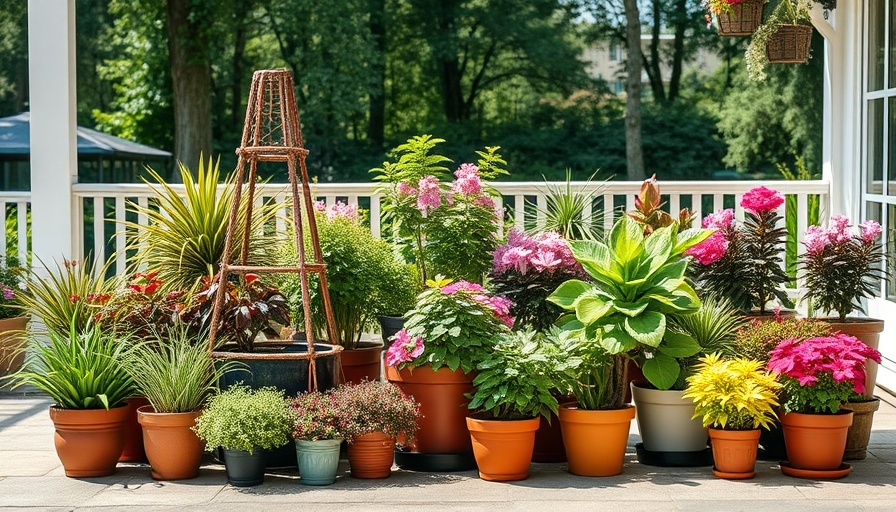
Understanding Plant Diversity: Why Too Much Can Be Counterproductive
When embarking on your landscaping journey, you may ask yourself: how many types of plants is too many? The appeal of vibrant flora can quickly lead one to overcrowd their outdoor space, potentially impacting both health and aesthetics. Before diving headfirst into planting, it’s essential to understand the delicate balance of biodiversity in your garden.
Creating a Balanced Landscape Design
A successful landscape design hinges on variety, but that doesn't mean overloading your garden with every flower and shrub that catches your eye. Each plant has specific sunlight, water, and space requirements. Planting too many differing species can lead to competition for resources—essentially choking your plants’ growth potential. For example, annuals like petunias can flourish alongside perennials such as daisies if spaced correctly; however, cramming these plants too close together will stifle their natural capabilities.
Choosing the Right Plants for Your Environment
The right selection of plants greatly influences the harmony of your yard. It’s essential to consider the environmental factors like climate, sunlight, and soil type. Native plants can be a smart choice, flourishing in local conditions while often requiring less maintenance. By keeping your plant choices varied yet harmonious, you can create a lively space that accommodates pollinators and celebrates seasonal cycles.
Maintaining Optimal Health and Growth
As plants grow, the need for space becomes apparent. Dense plantings can lead to issues such as poor airflow, which exacerbates disease spread, and competition for crucial nutrients. When planning your garden, it’s advisable to consider mature sizes rather than planting solely based on the current size. Practical spacing involves understanding that annuals, which thrive for one season only, require closer spacing than perennials, which return year after year.
Personalizing Your Landscape: Balancing Beauty and Function
Every garden is personal, reflecting the owner's preferences and needs. Striking the right balance between aesthetic appeal and practical considerations is vital. If you admire a whimsical garden with countless varieties, maintain mindfulness about space to avoid overwhelming your landscape. Rotate different plant species through the seasons. This way, you can enjoy diverse blooms without crowding while keeping the area vibrant.
Future Trends in Landscape Design
As sustainability becomes more critical, future trends point toward simplified gardens with a focus on native and drought-resistant plants. Lesser-known varieties can be introduced to the mix for added interest without a frantic overabundance. Understanding ecological principles leads to a gardening philosophy that emphasizes biodiversity, encouraging wildlife and resilient plant combinations, ensuring harmony.
Common Misconceptions About Plant Diversity
Many homeowners believe that more plant types equal more beauty, but this isn’t always the case. Quality outweighs quantity when creating landscape masterpieces. An insightful approach involves selective diversity, where a few carefully chosen varieties can create a stunning tapestry without overwhelming the senses.
Actionable Insights for Your Landscaping Journey
Overwhelmed with choices? Start small with a plan that prioritizes the needs of your plants based on space and care requirements. Engage in continuous learning about plant care and landscape architecture, connecting with local gardening groups or experts for advice on designing the ideal balance. Keep exploring new options, but always remember that strategic choices yield the best results.
Your journey to create the perfect outdoor space starts with understanding and respecting the plant types available to you. Exploring more resources or reaching out to local gardening experts can enrich your knowledge and help you make confident planting choices.
 Add Row
Add Row  Add
Add 






Write A Comment